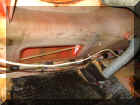
Via Veloce by Wille R. www.veloce.se since November 1995 and still here.
Alfa Romeo Duetto 1966 - 1969 FAQ --![]()
All five dials in the Duetto cockpit were the Italian-made Jaeger brand, with lettering in Italian for most markets, but in English for right-hand drive cars. In a main hooded binnacle (with a crackle-black finish) directly in front of the driver sat the two main chrome dials, a speedometer and rev counter, both of them in black with white lettering and white needles.
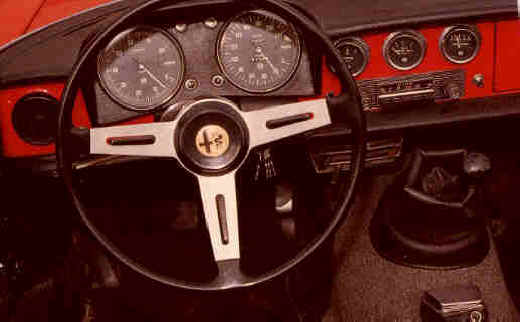
Testers continually remarked on the unusual feature of small stops to prevent the needles returning to zero on either dial.

The Veglia instruments were rare.
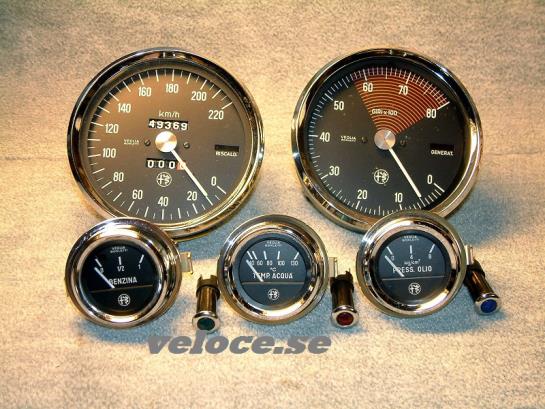
To remove the dash:
First mark and disconnect all wires including the speedo and rpm cables- both should unscrew by hand. Next unscrew two screws that attach the heater adjustment assembly to the bottom of the dash. Next undo two bolts, one each end of the dash. Undo two screws holding the choke/hand throttle assembly. Next, unscrew three connectors (should be wing nuts) under the dash which connect the top to the car. There is one behind the RPM counter, one in the centre rear of the dash and one behind the glove box. The whole thing should then lift out. Replacement is the reverse, but getting the dash top to stay in the right place is a fiddle.
The speedometer was calibrated up to 220kmh or 140mph depending on the market. Within the speedometer were contained the mileometer and, above it, the trip meter (the reset button was sited below it, under the dashboard). Towards the right-hand side of the speedometer was an electric fan warning light with ‘RISCALD’ script or, in English-speaking markets, ‘HEATING’. Within the rev counter was a dynamo charge warning light with DYNAMO script or ‘GENERAT’ for English-speaking countries. The rev counter itself was red-lined at 6.300rpm up to its maximum marking of 8.000rpm, by concentric red arcs. Between the two main dials were four warning lamps: the upper pair were left and right indicator lamps while the lower pair were for headlights on (left) and headlamp main beam (right), the latter with the word ‘HEADLIGHTS’ written on it.
In the centre of the dash were three further individual circular gauges set in chrome bases that were angled towards the driver. These were for water temperature, oil pressure and fuel level (the latter incorporating a ‘fuel low’ warning lamp). Directly below these gauges sat a radio blank fill-in panel. The very earliest cars had an Alfa Romeo badge sited centrally in this panel but later ones had ‘Pininfarina’ script with an Alfa badge at the right-hand end. If you specified a radio, it would replace this panel. To the far end of the panel was a toggle switch to operate the blower, while on the side nearer to the driver was the windscreen wiper toggle switch. In front of the passenger was a lockable glove-box, still in body-colour paint. A twist knob with a keyhole opened it up.
Underneath the lower padded facia edge in the centre of the dash was a chrome-plated panel containing the sliders for the heating and ventilation: the upper slider was the air control, the lower slider the temperature control. To the outer edge of the main instrument panel was a sole switch that operated the dash panel lights. The minor controls were praised in the press for their good location, including the column stalks, which were two in number, and always mounted to the left of the column, whether left-hand or right-hand drive. The longer one operated the side and headlamps, plus the headlamp flasher/dipper, while the shorter one was for the self-cancelling indicators. Under the dash, to the right, was the fuse box, supplemented by an extra fuse holder box.
The steering wheel – taken straight from the Giulia Sprint GT Veloce – boasted a design that echoed racing themes. It had a black plastic rim and three metal alloy spokes, each of which contained hole for a long button that could be pressed to operate the horn. The black plastic central boss naturally contained an Alfa Romeo badge (in gold). The steering column incorporated a theft-proof lock with the following markings: ‘BLOCCO’ which means steering lock on, ‘GARAGE’, steering lock off, ‘MARCIA’ ignition on and ‘AVVIAM’ starter motor on.
The gear lever was mounted on a raised ‘plinth’ and set at an angle of about 45 degrees. This was simply because the Spider shared the mechanical package of the Giulia saloon, yet the driver sat further back, resulting in the gearbox being sited further away. Alfa’s solution was the angled gear lever rather than a remote control. Publicity photographs of the very earliest pre-production demonstration cars show that the gear lever was shrouded at its base by a concertina rubber gaiter, as opposed to the vinyl bag-type gaiter that all production cars had. The lever itself was a straight chromed pole with a knurled spherical gear knob in black plastic.
The handbrake was sited centrally between the seats, unlike the early Giulia saloon, which had its pistol-grip handbrake mounted under the dash. It was a canted chromed lever with a concertina gaiter, a knurled black plastic handle and a white release button.
The ashtray, a separate unit mounted on the transmission tunnel aft of the base of the gear lever, was a novel feature for 1966. It cleverly incorporated a lighter that automatically lit when a cigarette was inserted, a real novelty at the time. You simply dropped a cigarette into the hole and pressed down the knurled rim, or vice versa, and a little bell would warn you when it was all ready.
The framed rear view mirror was of the dipping variety, having two positions. A light was positioned in the mirror with a switch to turn it permanently on; in the off position, the light was actuated as a ‘courtesy’ lamp when either door was opened.
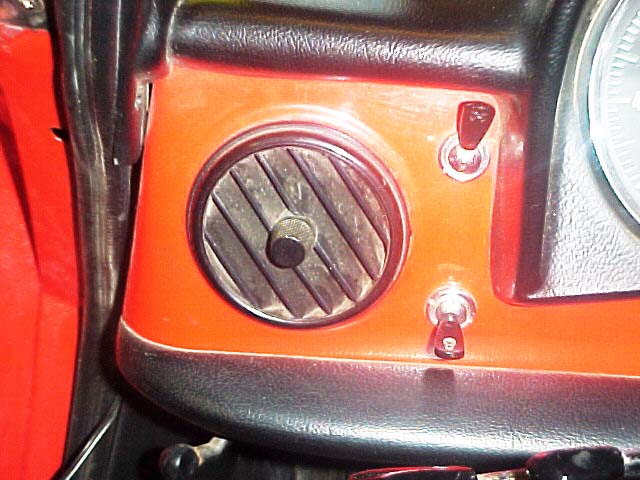
Ventilation was by adjustable fresh air outlets, one on each end of the facia. These were circular in shape with flaps, and there was a central knurled knob to twist the vent around. Under the dash on the extreme end of each side was a small lever to adjust the air-flow. The Duetto was rare in sports car terms for having under-facia ventilation as well, keeping feet cool. The upper lever in the centre of the dash regulated the degree of flow to the under-dash vents and defroster vents.
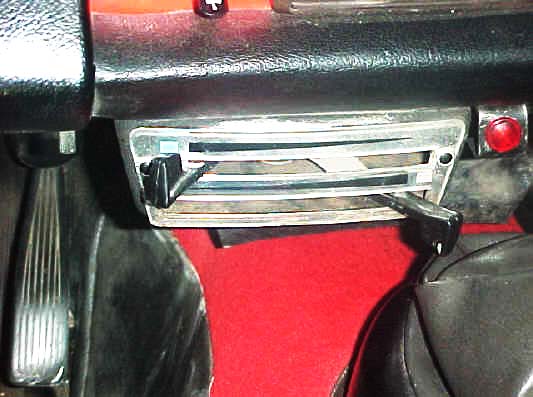
The choke control (labelled START) sat under the facia next to a hand throttle labelled ACCEL. The hand throttle was provided for the purpose of warming the engine up before setting off on a journey from cold: Alfa Romeo was particularly insistent on this requirement, since the all-alloy engine was susceptible to damage if revved too freely from cold. Balancing this throttle against the choke would remain a Spider quirk for many years.
On the Duetto the brake and clutch pedals were floor-mounted in an almost vertical position, and the brake pedal was ideally located for heel-and-toeing. >> Right-hand drive cars had different pedal mounting hardware, though very much along the same lines as left-hand drive cars.
On the floor sat a foot-operated switch that worked a combined windscreen wash and wipe function.
Oh, BTW, I have seen a light modification of a Duetto. Incorrect rev counter but the dash vents seem fair. They are from a FIAT I beleive.
If you have any comments, please send an E-mail
#



